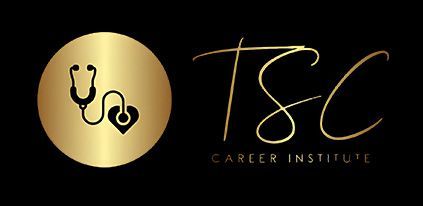CPR Training Programs
Request Call Back
Comprehensive CPR Training at TSC Career Institute
TSC Career Institute offers detailed CPR training designed to equip you with the skills needed to handle cardiac emergencies effectively. Serving the Dallas-Fort Worth area, Dallas Metroplex, Southern Oklahoma, and Western Louisiana, our programs provide the essential knowledge and hands-on experience crucial for saving lives. Whether you're a healthcare professional or a concerned citizen, our courses are tailored to meet your needs. Call or text us to learn more about our CPR training programs.
When to Seek Professional CPR Training
Recognizing when you need professional CPR training is crucial. Here are some indicators that it's time to get in touch with a certified CPR instructor:
- Witnessing frequent cardiac emergencies at work
- Lack of confidence in performing CPR
- Infrequent practice leading to forgotten techniques
- Desiring certification for job requirements
- Belonging to a high-risk group for cardiac events
- Wanting to be prepared for emergencies at home
Request a call back from us to get started with your CPR training today.
Advantages of Professional CPR Training
Enrolling in CPR training at TSC Career Institute brings numerous advantages that ensure you're well-prepared to handle emergencies:
- Affordable pricing
- Hands-on experience
- Good student-to-teacher ratio
- Hybrid model options
- Same-day appointments
- Compliance with the Texas Workforce Commission
- Certifications good across the country and its territories
- Certifications can earn extra $5/hour in certain industries
Get in touch with us to benefit from our comprehensive CPR training programs.
Essential Benefits of CPR Training
Our CPR training programs are designed with your needs in mind, offering a range of benefits that make our courses stand out:
- Life-Saving Procedure: CPR can double or triple survival chances after cardiac arrest by maintaining partial blood flow until medical help arrives.
- Types of CPR: Includes conventional CPR (chest compressions with breaths) and compression-only CPR for bystanders.
- Distinguishing Conditions: Cardiac arrest is an "electrical" issue where the heart stops unexpectedly, while a heart attack is a "circulation" issue due to blocked blood flow.
- Practical Guidelines: Focus on proper compression depth (2-2.4 inches) and rate (100-120 compressions per minute).
Request a call back now to secure your spot in our CPR training programs.
Contact Us
Ready to enhance your life-saving skills? TSC Career Institute is here to provide you with the best CPR training in the Dallas-Fort Worth area and beyond. Call or text us today to learn more about our programs and how we can help you become a certified CPR provider.



Share On: